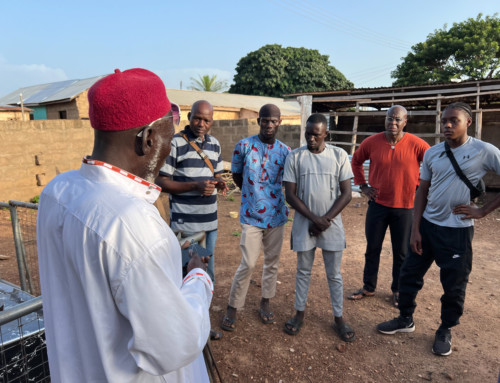
Thomas Graham and Dr. Vanila Singh co-authored this article.
During a crisis, audiences aren’t looking so much for someone to blame as they’re looking for someone to take responsibility. They’re also looking for someone to restore a sense of calm through offering reasoned, sensible solutions. This takes honesty, transparency, a firm grasp of the situational facts and leadership.
The COVID-19 pandemic seemingly eschews such common-sense crisis communications advice. We’re fighting a silent, relatively unknown adversary, a novel virus. Highly divided factions get mired down in political fighting about responsibility, which does more to arouse fear, anger and panic than abate it. That begets another crisis within a crisis.
As healthcare communications experts and healthcare leaders, what can you do to lead the public through this morass?
Be a reliable, factual and reassuring source
Pay attention to the reporting from your local news outlets, and be prepared to weigh in with insights. Are there obvious medical and scientific holes you instinctively know could improve their reporting accuracy? Are they reporting anything in such a way that they are—perhaps and hopefully unwittingly—adding to the confusion and fear?
Make notes and prepare a succinct, fact-based statement to use in a pitch. By and large, news outlets want to get the story right. Don’t assume another expert is lining up to correct them; many may have their sights set on larger audiences. You have the opportunity to be the calming voice that leads your community out of the chaos now. This can help you prepare and provide you with assets to take your expertise to a larger stage later.
Stay in your lane of expertise—but relay it to COVID
Absolutely and under no circumstances should you portray yourself to be an expert in any field but that or those in which you are. This rule, however, is not as self-limiting as it may appear.
You don’t have to be an epidemiologist or virologist to offer thoughtful, useful and science-based dialogue during this pandemic; you just need to relate your expertise to concerns associated with it. Many physicians can comment on various aspects of the COVID virus due to patient experience, training, specialties and expertise that may not be obvious, but in general:
- A pulmonologist can give advice on types of masks for those afflicted with chronic respiratory conditions.
- A pain management expert can give guidance and reassurance to those in chronic pain, advising them to stay in communications with their doctors, keep their prescriptions filled, and reach out for human contact if dealing with the pain in isolation starts to feel overwhelming.
- Pediatricians can counsel parents and guardians on practical back-to-school advice.
- Pharmacology experts can talk about the realities and myths of whether the season’s flu shot is advantageous, or offer guidance to those who might be thinking about participating in a trial for a new COVID-19 vaccine.
- General physicians can offer guidance on possible contraindications with current medications and the increasing number of COVID-19 therapeutics, or provide travel advice to essential personnel, the traveling business population or holiday travelers.
- Mental health personnel can provide insight on the effects of prolonged social isolation and tips for caregivers and others concerned about the well-being of family members.
- Experts in medical technology can guide at-home patients on how to get the most out of telehealth—this is particularly important in those populations who aren’t typically tech-savvy but find themselves limited to an option that, were it not available, could lead to dire consequences. Imagine being the person who can turn that tech-adverse apprehension into gratitude!
It may take some creativity and it will take research, but particularly in a pandemic such as this where so many population segments are affected, we can’t think of a field of expertise that can’t be tied back to an issue in this pandemic.
Get media training
Bedside communication is a great building block for communicating to the media. Coming off as calm, compassionate, well-versed and articulate is necessary and effective. There are, however, two important considerations in this climate of crisis: The first is that we don’t know what we don’t know (still); and the second is the highly charged political environment.
Ever-changing information. The best way to deal with constantly changing and updated information is to admit it may change. The practicalities of a novel virus are completely impractical in information dissemination, but that’s why reasoned voices are so necessary. Consistently providing basic, practical information and aligning with expert health agency guidance keeps you in the realm of the national experts.
Political environment. This is where media training becomes more than just good advice—it’s a necessity. A good media trainer will take the above advice about consistently aligning with the experts, and teach you how to bridge your messages away from politically charged questions back to what the audience really needs to know to stay safe and survive.
Moving to the larger stage
When you feel comfortable with your skills and have some media assets—video and online clips—to leverage your experience, look for opportunities in regional and national media. This is more difficult, but it’s also a crowded field of media talking about the same thing, which means every one of them needs a proven expert.
Remember, however, that not getting booked on a major network or cable show doesn’t mean you can’t increase your exposure. You now have a much larger captive online audience than existed a year ago. Use social media platforms. Participate in virtual panels and forums—and then share those on social media. Encourage your friends and peers to share—and share info from your peers, as well, to increase your thought leadership circle. Surrounding yourself with smart, successful people will eventually place you squarely in that realm.
Patient communications
Finally, for those who are simply struggling with how to invoke all of this new information into their patient communications—all of this media training can help, certainly. Your expert calm, collected presence during your news Skype interview will transfer reassuringly to your patients during their telehealth visits. Telehealth also means that you can spend a bit of extra time to answer questions fully, while assessing patients’ in-home surroundings to get a clearer understanding of their mental health. Have other resource information handy, such as meal delivery services. And if in-person visits are required, reassure them about the precautions being taken.
The healthcare industry is inherently one of emotional upheaval that requires a steadfast resolve to navigate. These are traits that, combined with some professional media guidance, give you the potential to be the leadership voices we need during the pandemic crisis.
***
Thomas Graham is the Founder and CEO of Austin, TX-based Crosswind Media & Public Relations. Dr. Singh is immediate past Chief Medical Officer of the Office of the Assistant Secretary for Health at the U.S. Department of Health and Human Services and Chair of the Pain Management Task Force.




